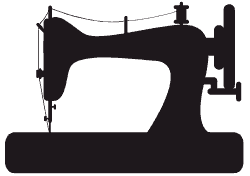Step-by-Step Guide to Drafting Your Own Sewing Patterns
Drafting your own sewing patterns is a rewarding skill that allows you to create custom garments tailored perfectly to your measurements and style. While commercial patterns provide a great starting point, designing your own patterns offers unmatched creative freedom and ensures a better fit. If you’re new to pattern drafting, don’t worry — this step-by-step guide will walk you through the basics to get started with confidence.
Why Draft Your Own Patterns?
Creating your own sewing patterns lets you control every aspect of the design, from shape and size to style details. It also helps you understand garment construction deeply, which improves your overall sewing skills. Custom patterns can save you from the frustration of ill-fitting ready-made patterns, especially if you have unique body measurements.
Tools You Will Need
Before beginning, gather some essential tools:
- Large pattern or kraft paper
- Rulers (straight and curved, such as a French curve)
- Measuring tape
- Pencil and eraser
- Scissors
- Pattern weights or pins
- Notcher and tracing wheel (optional)
- Clear grid ruler or quilting ruler
Having the right tools makes drafting easier and more accurate.
Take Accurate Body Measurements
Accurate measurements are the foundation of a well-fitting pattern. Use a flexible measuring tape and record the following key measurements:
- Bust
- Waist
- Hips
- Shoulder width
- Back length (nape of neck to waist)
- Arm length
- Neck circumference
Take measurements with the body in a relaxed, natural posture. For best results, wear fitted clothing or measure directly on the skin.
Draft the Basic Block (Sloper)
The basic block, or sloper, is a simple, fitted pattern piece that represents your body shape without any design details. It serves as the foundation for creating all other patterns.
Start by drawing a vertical line on your paper representing the center front or center back. Mark key points according to your measurements, such as bust, waist, and hip levels.
Use your bust, waist, and hip circumferences to draft horizontal lines and shape the side seams. Add darts if necessary to shape the fabric around the bust or waist. Remember to draft both front and back blocks.
Use your rulers and curves to connect points smoothly, creating clean lines.
Add Ease for Comfort and Style
Ease is the extra space added to a pattern beyond your exact body measurements, allowing for movement and desired fit (loose or fitted).
Decide on the amount of ease based on the garment type — more ease for casual or loose-fitting clothes, less for tailored pieces.
Add this extra width to your pattern, distributing it evenly along side seams, sleeves, or other parts.
Draft Pattern Pieces for Sleeves and Collars
If your garment includes sleeves, draft a sleeve pattern by measuring your armhole circumference and drawing a sleeve cap that fits smoothly.
For collars, sketch the desired shape, such as a simple shirt collar or a stand collar, using your neckline measurement as a guide.
Both sleeves and collars can be customized and require some practice to perfect the curves and fit.
Add Seam Allowances and Markings
Once the pattern shapes are finalized, add seam allowances—usually 1.5 cm (5/8 inch)—around all edges where stitching will occur.
Include important markings like grainlines, notches, darts, fold lines, and placement points for buttons or zippers. These markings guide you during fabric cutting and sewing.
Label each pattern piece clearly with its name and quantity to cut.
Test Your Pattern with a Muslin
Before cutting into your final fabric, create a test garment using inexpensive muslin or similar fabric. This practice garment helps you check the fit and make adjustments.
Pin and sew the muslin together following your drafted pattern. Try it on and note any areas that need tweaking, such as tightness, length, or shaping.
Make necessary changes to your paper pattern based on this fitting session.
Finalize and Use Your Pattern
After perfecting your muslin fit, transfer any changes to your final pattern paper. Your custom pattern is now ready for cutting and sewing your garment in your chosen fabric.
Store your patterns carefully, either folded or rolled, and keep detailed notes on each design for future reference.
Tips for Successful Pattern Drafting
- Take your time with measurements and drafting; accuracy is key.
- Practice drafting simple garments like skirts or basic tops before moving to complex designs.
- Use grid paper for easier alignment and proportionality.
- Keep experimenting and learning from each project to improve your skills.
- Don’t be afraid to modify existing commercial patterns to suit your style and measurements.

